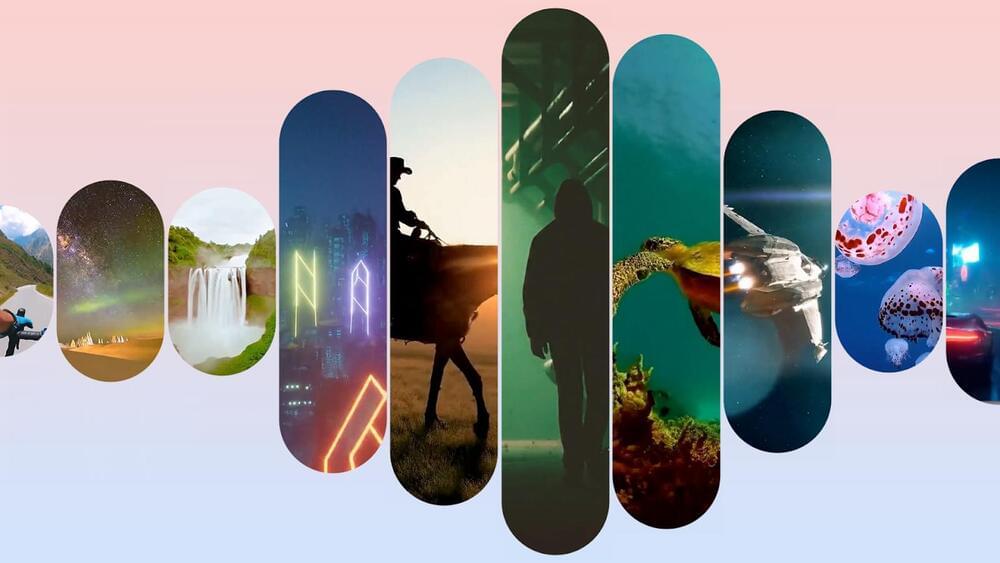In this episode, Ben Watkins sits down with Professor Pete Mandik to discuss several different ways of conceiving of materialism along with strengths and weaknesses of each approach. Professor Mandik also gives a summary of a view inspire by Quine he calls “Type-Q Materialism.” Additionally, Ben and Professor Mandik discuss various aspects of religious mysticism and touch on the philosophy of Ludwig Wittgenstein.
Category: entertainment – Page 15

Game developer says Intel should recall its defective, crash-prone CPUs
Facepalm: Crashes experienced by customers owning recent high-end Intel processors aren’t just software or BIOS-related issues. Alderon Games founder Matthew Cassells says Chipzilla has made his company’s life much more complicated than it should be. The game developer has experienced considerable Intel CPU problems, including crashes, instability, and memory corruption.
The number of people and organizations forced to experience crashes and general instability on Intel’s latest CPU models keeps growing. Now, a game developer is blatantly pointing the finger at the Santa Clara corporation and its alleged “defective” products.
“Despite all released microcode, BIOS, and firmware updates, the problem remains unresolved,” Cassells said.
Huge Progress Happening In PS4 Emulation With ShadPS4
With another emulator capable of running 3D PlayStation 4 games, good PS4 emulation might arrive sooner than a PC port of Bloodborne.

Is the universe a game?
Generations of scientists have compared the universe to a giant, complex game, raising questions about who is doing the playing – and what it would mean to win.
Kansas — Portrait (He Knew) (1977) (Remaster) [720p HD]
“Portrait (He Knew)” was released in 1977 on the album Point Of Know Return. It was clearly about Albert Einstein although not a lot of people seemed to be aware of the fact. It was a great song for a video, and one of my favorite on this particular album, the other’s being “Nobody Home”, “Closet Chronicles”, and “Dust In The Wind”. Point of Know Return was HUGE in 1978! I remember listening to it over and over and over…loved the many instrumental breaks and solos. The video is just layers and layers of masked images and masked video. Tried for some really cool effects and found some pretty neat ones…’specially fond of that tree recoil effect from the atom bomb at that cool little note drag! Anyway, as usual…I hope you find something to enjoy. [Lyrics] He had a thousand ideas, you might have heard his name He lived alone with his vision Not looking for fortune or fame Never said too much to speak of He was off on another plane The words that he said were a mystery Nobody’s sure he was sane But he knew, he knew more than me or you No one could see his view, Oh where was he going to He was in search of an answer The nature of what we are He was trying to do it a new way He was bright as a star But nobody understood him “His numbers are not the way” He’s lost in the deepest enigma Which no one’s unraveled today But he knew, he knew more than me or you No one could see his view, Oh where was he going to And he tried, but before he could tell us he died When he left us the people cried, Oh where was he going to? He had a different idea A glimpse of the master plan He could see into the future A true visionary man But there’s something he never told us It died when he went away If only he could have been with us No telling what he might say But he knew, he knew more than me or you No one could see his view Oh, where was he going to But he knew, you could tell by the picture he drew It was totally something new, Oh where was he going to?

ChatGPT-written “The Last Screenwriter” sparks debate on the role of AI in the film industry
AI take over of entertainment industry by 2029–2030 still on pace.
1/ Swiss director Peter Luisi has made a movie called “The Last Screenwriter”, the script for which he says was largely written by the AI ChatGPT.
A London theater has canceled the world premiere of a movie allegedly written entirely by ChatGPT. The director plans to release the movie online.
The Prince Charles Cinema in London has called off this weekend’s planned world premiere of “The Last Screenwriter” due to public outcry over the film’s controversial screenwriter: ChatGPT.
Swiss director Peter Luisi’s film explores the collaboration between a human screenwriter and an AI system. Luisi says his film aims to spark a debate about artificial intelligence and its impact on the industry.
How generative AI could reinvent what it means to play
AI-powered NPCs that don’t need a script could make games—and other worlds—deeply immersive.

Generating audio for video
Video-to-audio research uses video pixels and text prompts to generate rich soundtracks.
Video generation models are advancing at an incredible pace, but many current systems can only generate silent output. One of the next major steps toward bringing generated movies to life is creating soundtracks for these silent videos.
Today, we’re sharing progress on our video-to-audio (V2A) technology, which makes synchronized audiovisual generation possible. V2A combines video pixels with natural language text prompts to generate rich soundscapes for the on-screen action.

Strengthener for graphene
Grapene’s unusually high conductivity and favorable mechanical properties could further the development of flexible electronics, new batteries, and innovative composite materials for aeronautics and space flight. However, the development of elastic and tough films remains a challenge.
In the journal Angewandte Chemie (“A Stretchable and Tough Graphene Film Enabled by Mechanical Bond”), a research team has now introduced a method to overcome this hurdle: they linked graphene nanolayers via “extendable” bridging structures.
Cartoon representations of the fabrication process of RBG films and toughening mechanism of mechanical bond. Upon applied force, the hidden chain of [2]rotaxane was released due to intramolecular motion, resulting in an increased interlayer slip distance. It follows that the mechanical performance of RBG films were improved when mechanical bond was introduced.
We are definitely living in a simulation | Roman Yampolskiy and Lex Fridman
Lex Fridman Podcast full episode: https://www.youtube.com/watch?v=NNr6gPelJ3EPlease support this podcast by checking out our sponsors:- Yahoo Finance: https:…